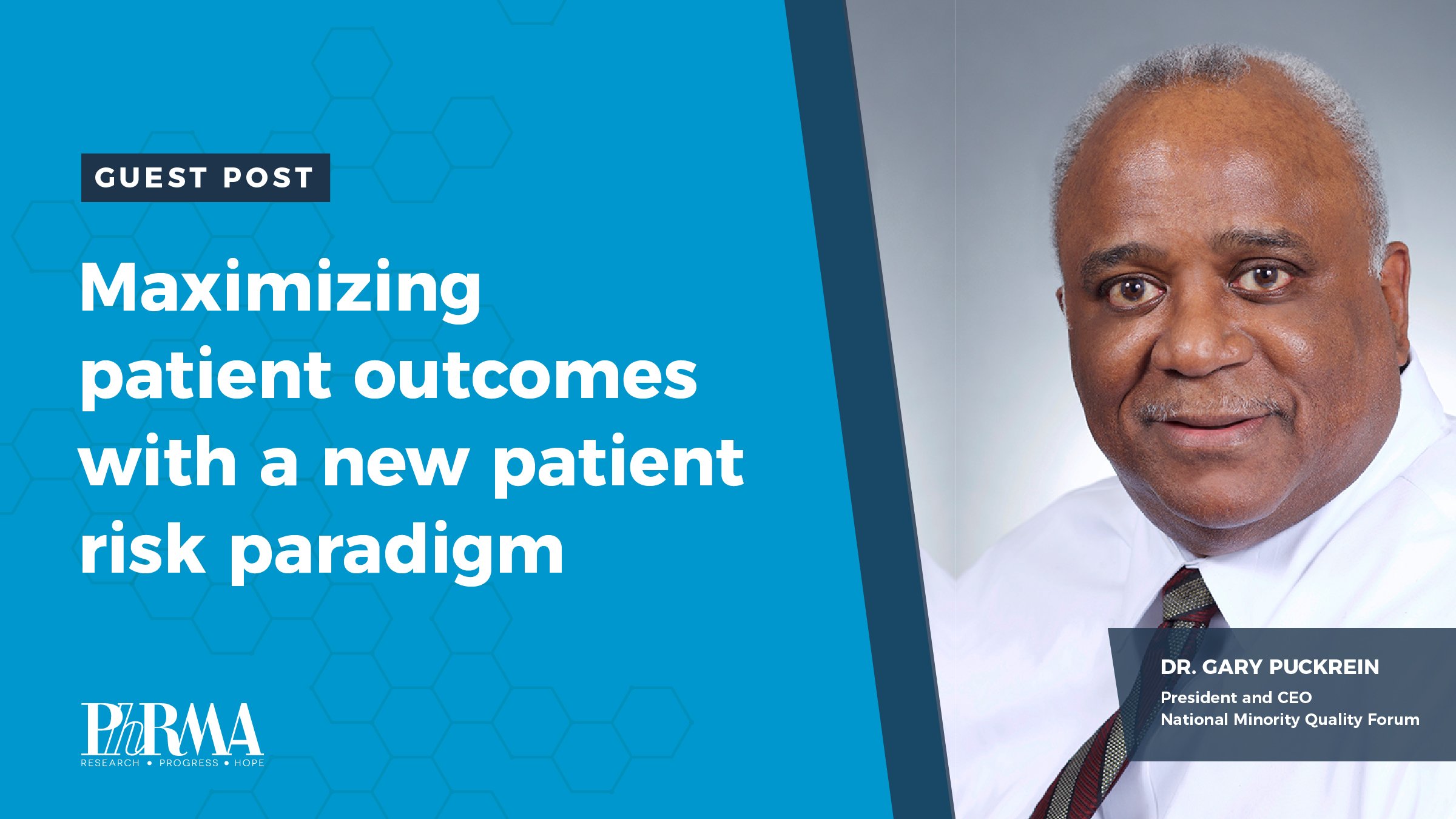 Conversations and healthy debate about issues facing our industry and the health care system are critical to addressing some of today’s challenges and opportunities. The Catalyst welcomes guest contributors, including patients, stakeholders, innovators and others, to share their perspectives and point of view.
Conversations and healthy debate about issues facing our industry and the health care system are critical to addressing some of today’s challenges and opportunities. The Catalyst welcomes guest contributors, including patients, stakeholders, innovators and others, to share their perspectives and point of view.
Today, we are pleased to welcome a guest post from Dr. Gary Puckrein, the founding President and Chief Executive Officer of the National Minority Quality Forum, a 501(c)(3) not-for-profit research and advocacy organization headquartered in Washington, DC. The mission of NMQF is to reduce patient risk by assuring optimal care for all. NMQF’s vision is an American health services research, delivery and financing system whose operating principle is to reduce patient risk for amenable morbidity and mortality while improving quality of life. Gary received his doctorate from Brown University.
Health care in the 21st century can be defined by two life-affecting trend lines moving in opposite directions. On one hand, we live in a golden age of medical innovation, a time in which new treatments and cures are being developed that can enable people to live longer, more active and fulfilling lives than ever before. Evolving genomic knowledge is providing us the tools to win generations-long wars against debilitating diseases. Through expanded data analytics, we are better enabled to predict adverse health events and intervene to ensure a better quality of life.
At the same time, though, as science is providing this brighter future, our healthcare system continues to move in a contrary direction, pursuing goals and objectives of our yesterdays. We rely upon structures that are designed to predict future health costs and to mitigate them. While there is no shortage of rhetoric about putting the patient at the center of healthcare decision-making, we still see risk-management paradigms that incentivize meeting cost containment targets and that lead to a de facto rationing of care. And there is a continued reliance upon “value assessment” entities like the Institute for Clinical and Economic Review (ICER), that utilize arbitrary formulas to determine whether it is cost-effective to make breakthrough treatments accessible to patients.
We know where this orientation toward financial risk mitigation in healthcare has gotten us. Life expectancy in the United States is lower than other developed countries. We don’t fare well comparatively in managing chronic conditions like diabetes or asthma. Racial and ethnic minorities continue to experience significant disparities in both care and health outcomes.
This misalignment between the capabilities of modern healthcare and the way we choose to pay for and provide access to care simply cannot continue. We are missing the opportunity to improve societal well-being by adhering to structures ill-suited to the scientifically advanced times in which we live. It is time to replace our financial risk approach with a patient-centric, risk model, one that is focused on patient outcomes and investing in health rather than rationing care to achieve short-term savings.
The National Minority Quality Forum is taking a constructive step in this direction already by launching workstreams to improve upon the Center for Medicare and Medicaid Services (CMS) risk scoring models that are used in determining payments to Medicare Advantage plans.
Current CMS models place a myopic importance on the coding of healthcare services because projected future spending is based on the diagnosis codes that providers entered over the prior year of treating patients. It’s a model that focuses more on billing than it does on outcomes, with no attention paid to matters such as disparate outcomes, medication adherence, social determinants of health, or quality of life. It doesn’t incentivize quality improvement or the use of preventive services. The goal is to cap outlays, not improve lives.
Our work to create a patient-centric risk model is built around the precept that health systems should be designed and operated to reduce a patient’s risk for an acute event while improving quality of life. By utilizing data analytics and genomic assessments, it is possible to score the health risk for each patient and then devote resources to reduce that risk. The goal is to optimize care for each beneficiary, maximizing the capability of medical science to manage health outcomes. By blending the coding data currently used in CMS financial risk models with other variables such as genomics, social determinants of health, and adherence to clinical guidelines, we can align our health spending with improved outcomes and higher quality of life.
Making this kind of profound systemic change will not be easy, but there is a compelling case to be made for it. That case is underscored with each lifesaving and life-extending new therapy that receives approval from the FDA but may not be made accessible to patients within our current financial risk infrastructure.
This post originally appeared on the National Minority Quality Forum.



 Conversations and healthy debate about issues facing our industry and the health care system are critical to addressing some of today’s challenges and opportunities. The Catalyst welcomes guest contributors, including patients, stakeholders, innovators and others, to share their perspectives and point of view.
Conversations and healthy debate about issues facing our industry and the health care system are critical to addressing some of today’s challenges and opportunities. The Catalyst welcomes guest contributors, including patients, stakeholders, innovators and others, to share their perspectives and point of view.